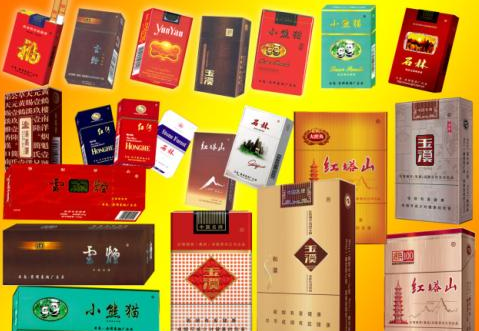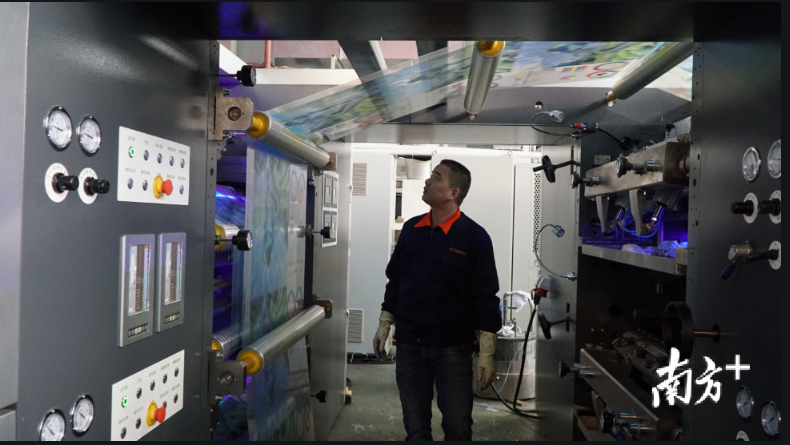

 2020-11-06
2020-11-06  1330Second
1330SecondGenerally speaking, it refers to the packaging process of cigarette carton, cigarette carton and packing paper, mainly including cigarette packing paper, packing paper and packing paper. It can be seen that the vast majority of tobacco packaging is inseparable from printing, and its printing methods cover gravure printing, offset printing, silk screen printing, flexo printing and other processes.

1、 Characteristics of VOCs in cigarette printing
The VOCs waste gas of cigarette package printing enterprises is formed by the volatilization of gravure printing products using solvent based ink, alcohol water-based ink, diluent and offset printing products using fountain solution and car washing water. VOCs waste gas contains benzene, toluene, xylene, ethanol, ethyl acetate, n-propyl ester, n-propanol, isopropanol and other volatile organic compounds, which is more stringent in the current environmental protection Under the requirement, the VOCs emission standard is the premise and guarantee to ensure the normal operation of the enterprise.
According to printing methods, domestic cigarette package printing methods are mainly web gravure printing and sheet fed offset printing. Among them, web gravure printing mainly uses solvent-based ink, supplemented by a small amount of alcohol water-based ink. Its products account for more than 60% of the total cigarette package, and a large amount of high concentration VOCs waste gas is generated in gravure production process; sheet fed offset printing mainly uses UV ink, and its products are mainly composed of UV ink It is a medium and high-end cigarette, which produces low concentration VOCs waste gas in offset printing production process; other printing methods such as single concave printing and screen printing are not the core printing methods of cigarette package. In order to achieve special effects, alcohol water-based ink and UV ink are mainly used, and extremely low concentration of VOCs waste gas is generated in the production process.
According to the emission mode, VOCs emissions of cigarette packaging printing enterprises can be divided into organized emission and unorganized emission. The organized exhaust gas mainly comes from the printing process, especially the drying process of printing equipment. It is usually equipped with a special collection system and emission system. The exhaust gas has the characteristics of complex composition, high cleanliness, stable temperature, and the concentration of waste gas varies with the product and speed; the unorganized emission mainly comes from VOCs waste gas volatilized from each process The waste gas has the characteristics of wide distribution space and low concentration.
According to the exhaust gas concentration, the VOCs waste gas of cigarette packaging printing enterprises can be generally divided into high concentration VOCs waste gas and low concentration VOCs waste gas. High concentration VOCs waste gas generally refers to the VOCs exhaust gas directly discharged from the oven during the gravure printing machine production process, and the concentration of waste gas is generally not less than 2G / m3; low concentration VOCs waste gas generally refers to the exhaust gas from gravure printing machine, offset printing machine, silk screen printing machine, single concave machine and other equipment The concentration of waste gas discharged from some places (such as ink warehouse, waste warehouse, ink mixing room, etc.) is generally lower than 300mg / m3.
2、 Analysis of VOCs waste gas treatment in cigarette packaging printing enterprises
(1) RTO: an effective tool for VOCs waste gas treatment in cigarette packaging printing enterprises
At present, the most effective, reliable and popular treatment method of VOCs waste gas treatment in the field of cigarette package printing is thermal decomposition method, namely, RTO is used. Its basic principle is to fully react VOCs and O2 in the exhaust gas under high temperature conditions to generate CO2 and H2O, and release heat at the same time: The temperature of RTO combustion chamber is generally about 820 degrees. Almost all VOCs in the exhaust gas react fully with O2 to generate CO2 and H2O, and release heat at the same time. RTO is insensitive to the changes of air volume, concentration and composition of VOCs exhaust gas in the flue gas package, which has high reliability. Its purification efficiency is up to 99%, which is one of the VOC treatment equipment with the highest purification efficiency at present. The high temperature clean gas discharged directly after the oxidation of the exhaust gas is designed to flow through the ceramic heat storage body, and most of the heat contained in the waste gas is stored through the ceramic body, and then the gas is discharged outside. The heat storage chamber is used to preheat the subsequent normal temperature exhaust gas through valve switching. So repeatedly, the heat efficiency is up to 95%, thus greatly saving the energy consumption. RTO has high thermal efficiency and purification efficiency, so the equipment can effectively complete VOCs waste gas treatment under the condition of relatively energy saving, and has high reliability and long life (more than 30 years). Therefore, RTO is the most typical equipment used by packaging printing industry to deal with VOCs waste gas at home and abroad.
(2) VOCs waste gas treatment in cigarette packaging printing enterprises
1. To gravure press high concentration VOCs waste gas treatment
At present, about 60% of cigarette package products are printed by web gravure printing, and solvent based ink is mainly used in the production process. Even if some "water-based ink" is used, it also contains a high proportion of ethanol. VOCs waste gas generated during the drying process of the ink is directly discharged through the oven. If the concentration of VOCs exhaust gas is high and above 1.8g/m3, the VOCs waste gas can be input into RTO for direct combustion treatment, and the RTO can be in self-sustaining state (RTO equipment is in normal operation state without additional energy consumption); if the concentration of VOCs exhaust gas is low but between 0.3g/m3 and 1.8g/m3, the implementation of L-type rotary air system for gravure printing oven can be given priority After El air reduction and concentration enhancement, the enriched VOCs waste gas is sent to RTO for direct combustion treatment; if the concentration of VOCs exhaust gas is very low, such as below 0.3g/m3, when the exhaust gas concentration cannot be increased by using the wind reduction and concentration method, the runner can be used for concentration treatment. Generally, this method has the disadvantages of large investment, high energy consumption, high operation and maintenance costs and poor stability of reaching the standard.
2. Treatment of other VOCs with low concentration
For the very low concentration VOCs waste gas produced in the production process of sheet paper UV offset printing, sheet fed gravure printing, screen printing and web gravure UV drying equipment in cigarette package printing enterprises, because of the characteristics of complex components, extremely low concentration, large air volume and wide dispersion, when selecting the treatment mode, we should not only consider the factors such as equipment investment cost, operation cost and stable standard, but also comply with the requirements In accordance with the relevant requirements of "encouraging enterprises to adopt a variety of technology combination process to improve VOCs treatment efficiency" in the national policy, cigarette packaging printing enterprises generally adopt a variety of technology combination process to treat low concentration VOCs waste gas, and conventional selection of "photocatalytic technology + activated carbon adsorption technology", which is relatively complicated.
3. Replace solvent-free printing machine at source to effectively reduce VOCs emission
Solvent free printing is a printing method in which 100% solid content ink (without any organic solvent) on the surface of substrate is dried by radiation curing source, including UV, led, EB, etc. The equipment uses cold light source to solidify the color ink. The ink does not contain organic solvents. There is no need to add any organic solvents in the process of use. There is no volatility. The emission of organic volatiles is truly realized. Due to the use of cold light source to solidify color ink, the printing process does not block the plate, dry plate, drying speed is fast, printing dot is more clear. Because there is no need to add any solvent, the VOCs residue on the substrate surface is almost zero.











